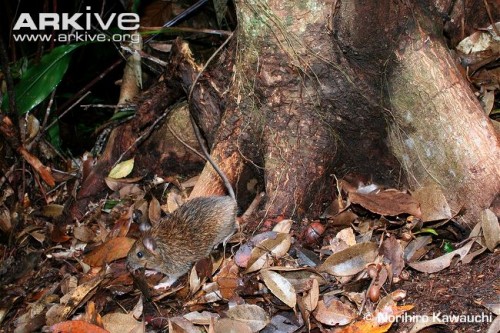Muennink’s Spiny Rat or Okinawa Spiny Rat (Tokudaia muenninki) is endemic to Okinawa Island, Ryukyu Islands, Japan. It is found only in forest (chinquapins) over 30 years old in the northern part (Yanbaru area) of the island, above 300 m asl. Recent research suggests that it may be restricted to an area of less than 3 square km. Although individuals were captured in 1978, no specimens were recorded for a further 35 years despite efforts to capture it in 1994. The species was reportedly found to be still extant in 2008. Population density estimates were of 1.8/ha in 1978 and the population is currently considered to be severely declining. Classified as Critically Endangered (CR B1ab(iii,v)) on the IUCN Red List of Threatened Species.
State
Pressure
The main threat is from deforestation, mainly through government forestry programs. Feral cats in the forest also predate this species, and this may also be contributing to population declines.
Responses
This species is legally protected, although there do not appear to be any specific conservation measures in place. Full protection of the Yanbaru region of Okinawa Island is recommended, along with management or control of introduced predators. Ongoing monitoring of the small, recently discovered population in the north of the island, together with further research into the ecology and distribution of the species will help to inform targeted conservation action for the Okinawa spiny rat. Awareness and education programmes would also be beneficial.
Knowledge level
Very little is known about the ecology of this species. This species resembles a large vole. It has a short thick body and dense fur, consisting of fine hairs and coarse, grooved spines (hence the common name “spiny rat”). The fur is brownish above and greyish white below with a faint orange tinge. The spines on the animal’s back are black throughout while the spines underneath are usually white with a rufous tip. The spines cover the body except for the regions around the mouth, ears, feet and tail. The tail is bicoloured for its entire length.








